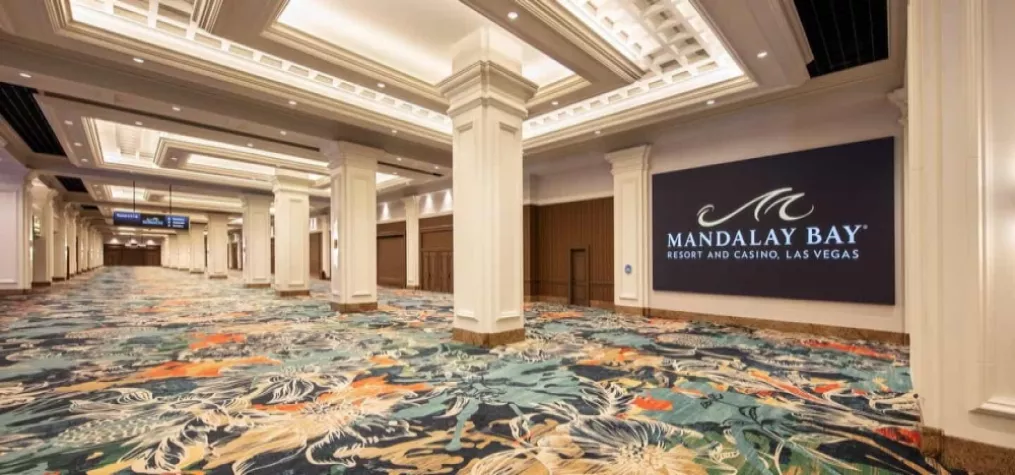What's in Store for Event Tech in 2022? Industry Leaders Share Their Predictions

Technology continues to evolve at mind-boggling speed, as the world becomes increasingly digital and attendees demand more engaging and creative ways to connect both in person and online. We checked in with four industry leaders to get their take on 2022 event tech trends: Julius Solaris, vice president of marketing strategy, events, Hopin; Cathy Song Novelli, senior vice president, marketing and communications, Hubilo; Josh Hotsenpiller, CEO, JUNO; and Sarah Soliman, president and CEO, Soliman Productions. Read on for their valuable insights!
Julius Solaris
1. Data to drive engagement
Engagement and data are two concepts that have been floated around the industry for decades without actual substance to support how to engage stakeholders and the role that data plays in delivering better experiences.
Few things have changed. The industry has shifted toward digital. Virtual events are now part of most event programs. Virtual gives a plethora of data that [event professionals] can use to make better decisions. That is great, but there is a shared sentiment to move past vanity metrics and embrace deeper data points that can actually deliver actionable insights.
At Hopin, we see data at the core of the virtual, hybrid and in-person engagement revolution. [Event professionals] are using data strategically to make better decisions that ultimately deliver better experiences. The correlation between stakeholders' engagement and event success is evident for those that measure accurately. This data-driven movement will potentially disrupt the industry, pushing past accepted best practices. Only data-backed decisions will make sense.
2. Virtual impacts in person
The collective online experience of the past two years has had deep repercussions on how we attend in-person events. Nobody wants to witness a 1.5-hour in-person keynote session. This is a direct result of our exposure to quicker formats online. Short, snappy content is preferred. Attention spans are shorter than ever.
The overfeeding of screen time has also changed attendees’ priorities. In-person attendees will favor connection and entertainment over content. Online audiences gravitate toward TV-style experiences, where they have a voice and the ability to interact with fellow attendees and speakers.
[Event professionals] face the need to create two separate experiences for hybrid events, yet those platforms that get it will offer the ability to create one event and cater for two audiences, at least on the back end, where having one platform makes a lot of sense to find economies of scale.
3. A shift from hybrid events to hybrid event strategy
We are moving past the obsession to have synchronous hybrid events at all costs. Synchronous or asynchronous. Hybrid events don’t need to happen in different channels concurrently. An event brand could decide to host in-person, digital or both. The future is wherever, whenever and however we want to attend. Be ready at every touchpoint with the best possible experience. That is not to say that the synchronous experience will go away.
Two concepts we like at Hopin are inclusion and sustainability. These are the reasons why hybrid events will stay relevant beyond the pandemic. In-person events with a digital component are more inclusive than just in-person events, and they are a direct way to minimize the impact of unnecessary travel and increased waste produced by in-person events.
Cathy Song Novelli
1. Asynchronous hybrid events
What’s really exciting right now is asynchronous virtual and hybrid events—rethinking time and space. With virtual really growing, the greatest benefit of it is that it allows for people to sort of jump in and jump out based on what works for their schedule, so it’s a lot more accessible to everyone. Event organizers are really trying to take that to the next level, so that it isn’t one event at one time. Maybe it’s in different countries, and it’s a broadcast, where you can have a few versions of a live event or different times with regional speakers. So, you can literally have the same playbook, then do it again in London and Singapore, for example, with different speakers talking about the same subjects so that its more market relevant
2. More immersive experiences
Virtual and hybrid events are really pushing the boundaries in terms of immersive experiences, so that you feel like you are there. There’s a desire to want to jump into the metaverse, but it’s not scalable just yet because most people don’t have the augmented reality or virtual reality equipment at home, so people are starting to play with more green screen technology, for example. There are much more innovations with audio and video productions so that it feels like you’re there in person with touch points in hybrid to really unify the online and the offline. People are reimagining what is possible and redefining the landscape, and I’m excited to see more events this year that just look and feel completely different.
Josh Hotsenpiller
1. Blended, blurred experiences
When you think about the metaverse, at its core, it’s two things you’re bringing together: the physical and digital worlds. The more you can blur the lines, not separate the lines, the more you can create connection, and that means building out environments where it doesn’t matter if you’re here or there, we’re experiencing it together.
2. Increasing intelligence and utility
There is going to be more intelligence for the user profile, and the more we can get to know the user, the more utility and the more value there will be. When you think of predominant apps such as Dropbox, Google Maps and Spotify, for example, these provide an incredible utility and value whether through automation or AI, and [event tech platforms] will do the same.
3. Greater follow-though on value proposition year-round
When you look at what makes an event or an association work, it’s connection and engagement. That’s the value proposition. For so long, we’ve spent so much time making sure we really deliver that for four or five days for an event. But then what happened during this new wave is that people realized we are connected all the time now through video, etc. So, the third trend is creating more solutions to deliver on our value proposition of connection and engagement in a single platform year-round.
Sarah Soliman
1. Multi-location simulcast hybrid events
Hybrid is going to evolve and transform because people are going to get more creative with how they want to meet. One thing I’ve been passionate about and more excited to do is a multi-city simulcast type of experience that is not just pre-recorded content. It’s real presentations that are happening in real time in Phoenix, Las Vegas and Orlando, for example, and bringing it all together seamlessly. We did a couple of events like that throughout the pandemic where we were producing multi-city simulcasts that were like a broadcast news type of scenario but in an event. Seeing how events are going to continue to evolve in that way is really exciting.
Photo (clockwise from top left): Julius Solaris, Cathy Song Novelli, Josh Hotsenpiller, Sarah Soliman
Don’t miss any event-related news: Sign up for our weekly e-newsletter HERE and engage with us on Twitter, Facebook and LinkedIn!


Add new comment